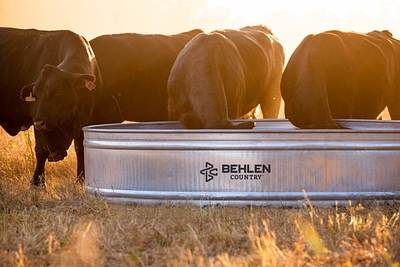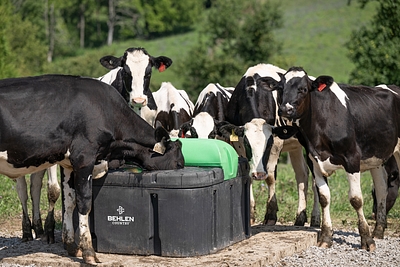Providing a consistent source of water is an essential aspect of livestock care, and there are numerous watering systems to choose from. Factors such as the number of animals, location, and budget play a significant role in determining the most effective and efficient watering system for your operation. However, regardless of the system used, it is crucial to check your animals’ water source daily.
Stock Ponds and Natural Sources
Utilizing available natural resources, such as stock ponds, has long been a practical method for watering livestock. While convenient, these sources must be tested regularly for water quality. A significant drawback of stock ponds and similar sources is their reliance on rainfall to maintain adequate water levels unless they are spring-fed. During periods of drought, they can become unreliable.
Small Stock Tanks

Small stock tanks are ideal for smaller acreages or lots with only a few animals. They are versatile and portable, available in various shapes, sizes, and materials. However, their smaller capacity means they require frequent refilling, typically done manually using a garden hose and hydrant. During winter months, tank heaters are necessary to prevent freezing.

Large Stock Tanks
Larger stock tanks are typically stationary and suited for pastures or larger operations. With greater capacity, these tanks can serve more animals. They can be filled manually or automatically using a float and valve system, windmill, or solar pump. Like smaller tanks, freeze prevention is essential in colder months. Methods include using heaters, creating water movement by allowing tanks to overflow, or utilizing aeration systems.
Automatic Waterers
Automatic waterers are the most hands-free option, offering convenience and efficiency, albeit at a higher initial cost. Their primary advantage is the ability to provide clean, fresh water automatically. However, regular maintenance checks are necessary to ensure proper functionality.
Automatic waterers can be broadly categorized into two types: electric and energy-free systems.
Energy-Free Waterers
Energy-free waterers are excellent for locations without electricity. These systems rely on livestock activity to replenish water with fresh groundwater, which typically averages around 54°F. Adequate insulation and a covered design help protect against extreme weather. However, proper functionality depends on a minimum number of animals using the system to prevent freezing. In optimal conditions, some models can perform reliably at temperatures as low as -20°F.- Electric Waterers
Electric waterers offer additional options when a power source is available. Key considerations include the wattage of the heating element, which affects winter utility costs, and ensuring the heat source is isolated from the water to prevent stray voltage, which could harm animals. These systems often accommodate larger herds, with features like bigger reservoirs and higher flow rates. However, the larger the system, the greater the associated utility costs.
Regardless of the type, proper installation is critical for automatic waterers to perform effectively. This typically involves trenching a water line below the frost line and securing it in an earth tube or similar conduit. Shut-off valves are recommended for easier maintenance, and most manufacturers require the unit to be placed on a concrete or cement pad for stability and performance.
While the initial installation of automatic waterers involves more cost and effort than traditional stock tanks, the long-term benefits in time savings and efficiency often outweigh these upfront expenses. Additionally, local conservation districts may offer cost-sharing programs to assist with installation. These systems not only promote water conservation but also prove cost-effective over time through reduced labor and utility expenses.

